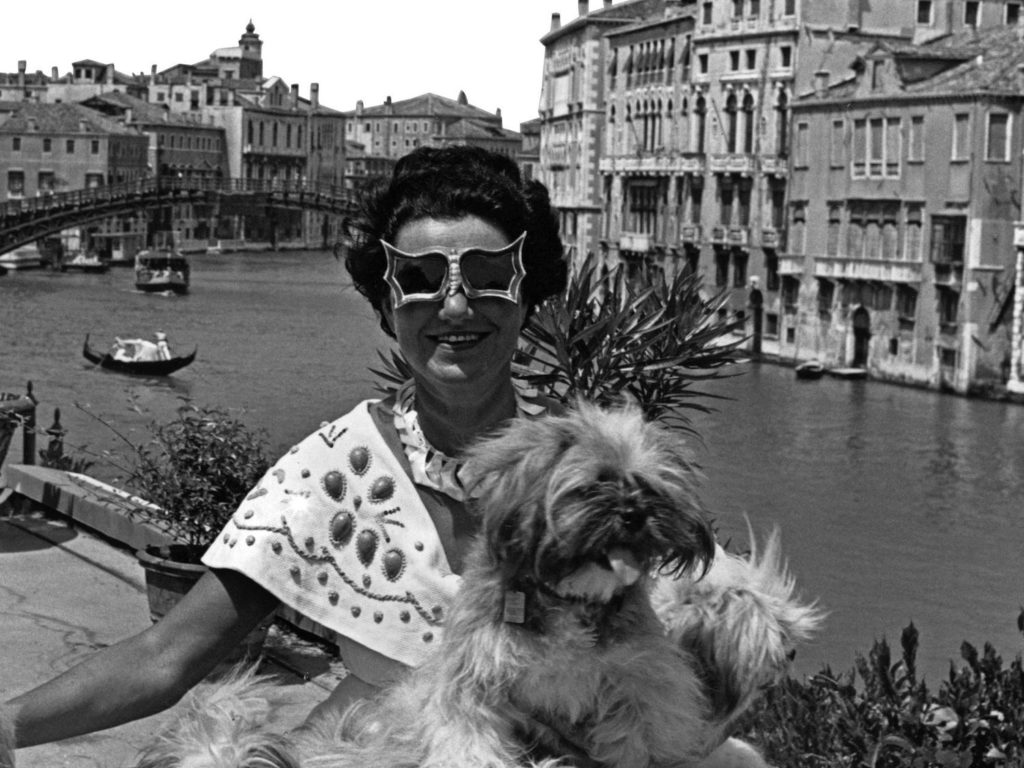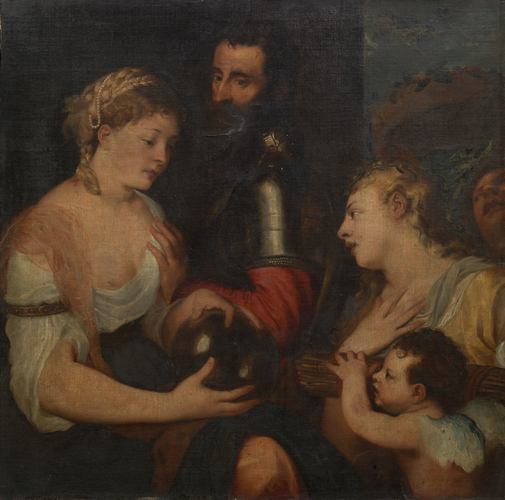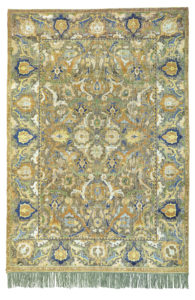From a legal perspective, provenance is important for a number of reasons. A series of blog posts during the next couple weeks will examine a variety of objects with interesting provenances, discuss the importance of provenance in legal disputes, present the role of provenance for authentication matters, and provide guidance for collectors. This first post will examine the establishment of provenance, notable histories, and a few interesting objects.
Provenance is an ownership history– the life of an object and its owners, wrapped into one. A provenance may consist of documents related to a work’s sale, such as purchase and sales agreements, bills of sale, or receipts. Exhibition, auction or museum records also supply important details, as the objects may have been listed in a contract, a catalog, a magazine, a newspaper or an advertisement. Another valuable resource is documentation memorializing the transfer of ownership within a family, like through a trust or will. Similarly, information from insurance policies may provide important details about ownership and location.

Some provenance information can be more personal in nature. For example, letters or journal entries offer important information about an object’s movements through time; these writings also provide insights about the personal connections people had with their work. For example, Vincent van Gogh’s frequent correspondences with his brother shed light on the painter’s activities and processes. Famed collectors have also been known to record their purchases in letters, journals or scrapbooks. Photographs may also play an important role in tracing a work’s movements, and they have provided serendipitous proof in a number of art law matters (we will discuss some of these matters in future blog posts). Yet, even without other sources, a provenance can be ascertained from the object itself. An object may bear an artist’s signature and date, in addition to sales labels, museum stamps, collector’s marks, or other distinctive visual clues.
An ideal provenance traces a work back to the artist’s hand, to the moment when a work sprang to life. However, a complete provenance is atypical for works older than a century. Provenances can provide important context for objects. In some instances, provenances may be even more interesting than the objects themselves. Some objects have passed through the hands of famous dealers, respected collectors, celebrity personalities, and even royal families. With each movement or transaction, the owners become part of the artwork’s history.
Last year, an exhibition opened at the Met Cloisters entitled The Colmar Treasure: a Medieval Jewish Legacy. The individual items on display were not extremely costly, but the story of the trove is riveting, yet tragic. A cache of rings, brooches, and coins was hidden in the 14th century in the wall of a house in the idyllic French town of Colmar. While renovating a shop in 1863, on a street known as the rue des Juifs (the Street of Jews), workmen stumbled upon a small cache of medieval jewels and coins. Based upon the location of the treasure and the appearance of a Jewish Ceremonial Wedding Ring, historians were able to piece together a tragic tale. The collection tells the story of the Jewish minority community in the picturesque French town. When the Plague struck in 1345-1349, townspeople all along the Rhine accused Jewish citizens of poisoning wells. Colmar burned its Jewish citizens to death. Following the massacre, the emperor exploited the opportunity to claim ownership of Jewish assets. From this, historians presume that the owners of the treasure hid it behind a wall for safekeeping. Historians have not identified the owners. No one can be certain why the items were left there for centuries, the history of the town suggests that the owners were victims of the scapegoating or fled from Colmar before they could remove the property. The discovery behind the wall allows us to understand the treasure’s context and a bit of its past.
Recently, another work appeared from behind a wall. We reported on it last year when the New York Times featured an article about a 17th-century painting by Arnould de Vuez, discovered during the renovation of an Oscar de la Renta boutique in Paris. Read our earlier blog post to learn about the object’s identification. However, the work’s journey is still not clear.

On the other hand, some works have fully developed provenances that date back for many centuries. Titian’s Allegory of Marriage (also known as the Allegory of the Marchese del Vasto) has graced many important collections during its 480-year history. It has been owned by eleven different owners, originating in Italy before moving on to England and France. Titian painted the work in 1540 in Venice, and then it moved to the Palazzo Ducale for its commissioner, Alfonso d’Avalos. It then went to Vincenzo Gonzaga in 1627. Next, it moved to Murano with famed Flemish art dealer Daniel Nijs, before it transferred to Charles I, who displayed it at the Palace of Whitehall from 1639-1649. (The French King may have acquired it at auction in Spain). It remained at Whitehall until it was sold to Louis XIV in 1683 and then displayed at Versailles Palace. It was then owned by Duc d’Antin from 1715-1737, held at Hôtel d’Antin. The painting then returned to Versailles with Louis XV from 1737-1752. Finally, it was transferred into the Royal Collection in 1752, and then moved to the Louvre (perhaps in 1785) where it is still on display. The journey of this masterpiece is extraordinary because it changed so many hands, but we are still able to trace it directly back to the artist without any gaps. (This is also valuable for the authentication process– a topic we will address in a later blog post.)
Establishing a strong provenance is important not just for fine art, but for other collectibles and luxury items, including jewelry, musical instruments, and even carpets or furniture. In 2010, a set of playing cards was sold at auction for millions of dollars. The cards were not made for playing, but were created as works for a Kunstkammer, a collector’s cabinet. Although estimated to sell for $150,000 to $250,000, the item realized £2,421,123. The high price was due to the rarity of the set—it is one of only five sets of silver cards, and it is the only complete one. But making the set even more valuable is its extraordinary history. The parcel-gilt silver cards were created in Augsburg, Germany in 1616.
Legend has it that the cards were eventually in the possession of Infanta Carlota Joaquina of Spain, Princess of Portugal and Brazil, and the daughter of King Carlos IV. When Napoleon forced the Spanish King to abdicate, the princess became claimant to the throne of Spain and Spanish America. It is believed she took the set with her when she was exiled from Europe and fled to Brazil. It is thought that Princess Carlota gifted the cards to the wife of Felipe Contucci, a man who helped her try to take the Spanish crown after Napoleon forced her brother to abdicate. Contucci passed the cards down through the family. Although the provenance is hard to prove, when the cards were sold in 2010, they came in an early 19th-century leather box with a brass plate with this provenance engraved on it.
Carpets and tapestries are luxury items with prices greatly influenced by provenance. Persian carpets have been collected over the centuries and may command very high prices at auction. In 2019, Christie’s sold a pair of silk and metal-thread Polonaise carpets for millions of dollars. It is likely that the carpets have been together since their creation over four centuries ago. The carpets were woven under the instruction of the ruler of the Safavid Dynasty, Shah ‘Abbas I of Persia, with each carpet typical of the elegant designs produced in Isfahan during the shah’s reign. At the time, Isfahan was the capital of Persia; today it is a city still renowned for its elegant art and architecture.

 Carpets and tapestries are luxury items with prices greatly influenced by provenance. Persian carpets have been collected over the centuries and may command very high prices at auction. In 2019, Christie’s sold a pair of silk and metal-thread Polonaise carpets for millions of dollars. It is likely that the carpets have been together since their creation over four centuries ago. The carpets were woven under the instruction of the ruler of the Safavid Dynasty, Shah ‘Abbas I of Persia, with each carpet typical of the elegant designs produced in Isfahan during the shah’s reign. At the time, Isfahan was the capital of Persia; today it is a city still renowned for its elegant art and architecture.
Carpets and tapestries are luxury items with prices greatly influenced by provenance. Persian carpets have been collected over the centuries and may command very high prices at auction. In 2019, Christie’s sold a pair of silk and metal-thread Polonaise carpets for millions of dollars. It is likely that the carpets have been together since their creation over four centuries ago. The carpets were woven under the instruction of the ruler of the Safavid Dynasty, Shah ‘Abbas I of Persia, with each carpet typical of the elegant designs produced in Isfahan during the shah’s reign. At the time, Isfahan was the capital of Persia; today it is a city still renowned for its elegant art and architecture.
The carpets made their way to the Polish court to the Elector of Saxony, Augustus the Strong (who would eventually serve as King of Poland). Interestingly, Augustus was known for his patronage of the arts. He built palaces in Dresden, including the Green Vault, one of the earliest public museums in Germany (and one that was recently the victim of a high-profile and devastating theft). After returning to Poland after a two-year sojourn through Italy and France, Augustus worked to amass a collection, including Persian carpets, to display his wealth and power.
Travelers during the 17th and 18th centuries noted the sophistication and beauty of carpets coming from Isfahan, and a number of the “Polonaise” style carpets ended up in Europe where they were popular with 17th century courts and gifted to high-ranking officials. They were particularly popular in Poland. (In fact, the Metropolitan Museum of Art has a Polonaise carpet on display.) In 1695, Augustus gave the carpets to Count Lothar Franz von Schönborn, Prince-Elector and Arch-Chancellor of the Holy Roman Empire. The Schönborn family commissioned beautiful Baroque buildings in southern Germany, including the Schloss Weißenstein (Weissenstein Palace). The summer palace came to house one of the largest collections of Old Master paintings in Germany, including works by Rubens, Titian, and Van Dyck. It was in this palace that the two Polonaise carpets remained for centuries. Interestingly, the original palace inventory labels remain on the carpets, bearing proof of their royal provenance. The two carpets sold at Christie’s were particularly coveted because of their pristine condition and vibrant colors. However, the royal provenance makes the items especially valuable. Each of the Polonaise carpets sold for nearly £ 4,000,000 last year.
It is a privilege to work with clients, including major collectors and dealers, to assist them with investigating their unique property. We work with some of the world’s leading provenance experts to examine works ranging from paintings, antiquities, illuminated manuscripts, photographs, automata, and even clothing. No two matters are alike, and we pair our extensive network of experts with our extensive expertise in art, cultural heritage, and intellectual property law. It is a pleasure to assist our clients in navigating the sometimes overwhelming art market.